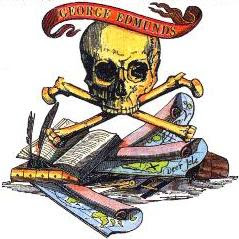REAL PIRATE TREASURE CHARTS
WELCOME TO THE WEBSITE DEVOTED TO CAPTAIN WILLIAM KIDD
AND IN PARTICULAR HIS TREASURE CHARTS. ENTER THE WORLD OF
REAL BURIED TREASURE CHARTS AND TREASURE YET TO BE FOUND.
About 10 years before the outbreak of WW11, the first of four 17th century charts were found in a
bureau that once belonged to Captain William Kidd. Three others were found over the next 5
years in various items of Kidd's furniture by Guy and Hubert Palmer, who lived in Eastbourne
GB. They were wealthy bachelors with a deep interest in pirate relics and maritime history. Their
museum was probably unique and without rival in the world. Hubert Palmer was a recognised
authority on piracy and was very careful to accept into his collection only those items that had
passed his rigorous tests to prove genuineness. Subsequent scientific testing by experts on the
charts confirmed that the ink and parchment were of 17th century origin.
REMEMBER !!!
BIG DAY IS AUGUST 18TH, MARK IT DOWN!

Friday, September 10, 2010
How rockets work
Although the Chinese invented the first rockets, the powerful rockets used today have their direct origins the United States and Europe. Robert Goddard demonstrated a liquid fuel rocket capable of reaching high altitudes. This was followed by advancements from Russian and German scientists creating rocket weapons before World War II.
The mixture that provides the Solid Rocket Boosters with fuel.
Rockets are usually powered by a chemical reaction or explosion within the rocket itself. Rockets can be powered by different types of fuel: early Chinese rockets used gunpowder, later on people used gasoline and other petroleum products to fuel rockets. Rocket fuels often had to be kept frozen to avoid explosions. Some rockets combine hydrogen and oxygen to create an intense chemical reaction. Some, such as the Russian N1, use kerosene. The Saturn V had 3 stages and used both petroleum fuel (in the first stage) and hydrogen fuel (in the second and third stages).

Subscribe to:
Posts (Atom)

